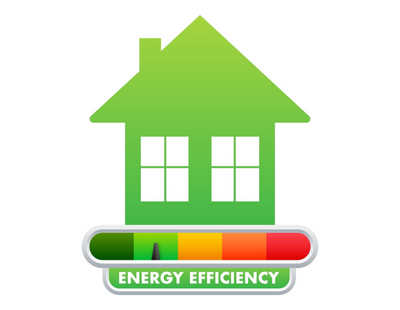Shocking new research shows that Energy Performance Certificates are inaccurate at best, useless at worst, and easily rigged.
A Sunday Times report over the weekend revealed the results of sophisticated and highly detailed research by a firm called CarbonLaces.
The firm claims EPCs overestimate energy use by up to 344 per cent - yet they remain a key part of current and expected legislation affecting landlords and other home owners.
CarbonLaces compared the EPCs of more than 17,000 homes with their actual use, as logged by smart meters every half hour for at least 300 days, to calculate their energy bills.
The Sunday Times reports: “The average metered gas and electricity use for all the properties studied was 125kWh per square metre a year — 91 per cent lower than what their EPCs claim (239kWh/m2/yr).
“The lower the EPC rating, the bigger the overestimation. For properties with the worst rating of G, EPCs estimate they use 656kWh/m2/yr. Yet their smart meters show they use only 151kWh/m2/yr — a 344 per cent gap.”
This inaccuracy is “quite staggering” says Madhuban Kumar, the founder of CarbonLaces.
She says EPCs overestimate not only energy use but also carbon emissions, by between 20 per cent (for EPCs rated C) and 308 per cent (for EPCs rates G).
The lengthy Sunday Times report also claims that EPCs on new build homes are open to widespread abuse.
For new homes, EPCs can be issued on design data alone. The [design] software assumes everything is perfectly fitted, but this may not always be the case.
The paper cites an example of workers on a new home “going around the skirting boards, sealing it all with mastic and foam.” He then had to rerun tests until the home passed — only for carpet fitters to cut out all the sealant again.”
One expert tells the paper: “All they do is make the plaster wall box airtight, while the building itself is very leaky. Give me a garden shed and enough mastic, foam and plaster board and I can make it airtight . . . It’s nothing to do with making sure that they’re energy efficient. It’s to do with ticking a box.”
This issue is of critical importance to landlords because the government has pledged to reduce energy consumption from buildings and industry 15 per cent by 2030, with aspirations for properties to have a minimum EPC rating of C in England and Wales by April 2025.
Under current government regulation, landlords are not expected to spend more than £3,500 on upgrades to meet the current EPC requirements for a rating of E.
However, proposed changes could see all rental properties requiring an EPC rating of C by 2028, and a potential increase to this cap to £10,000, meaning landlords could be required to spend more to meet minimum requirements.
You can read the full and very detailed Sunday Times report here, although for some readers it may be behind a paywall.
We're excited to announce that we're working on building a shiny new website for readers of Landlord Today! As part of this process, commenting on articles will be temporarily disabled. We look forward to sharing our new and improved Landlord Today website with you shortly!









.png)

(1).png)







.jpg)






%20(002).png)





